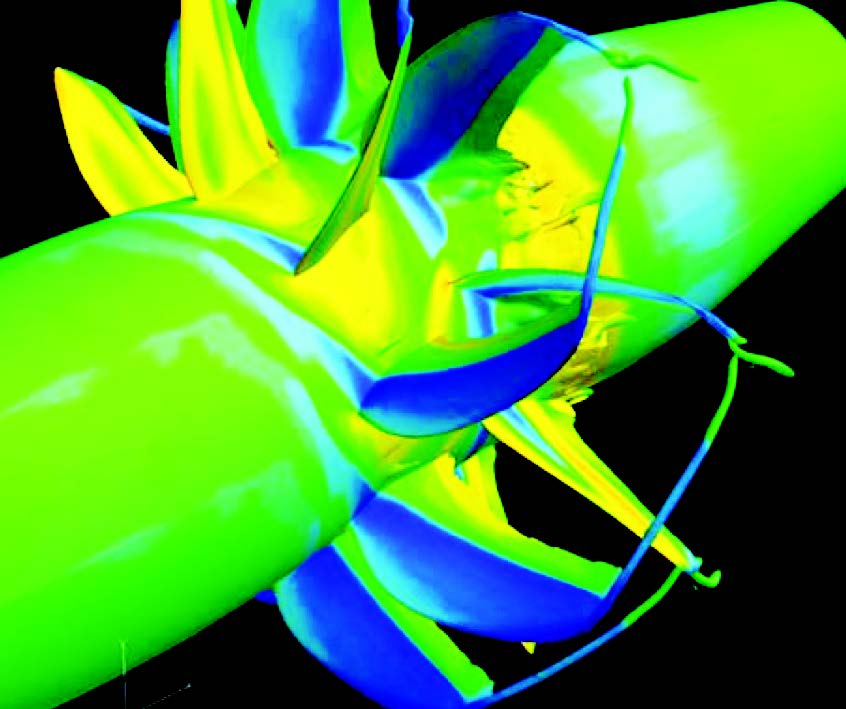left: Ohio State's Jen-Ping Chen used Ohio Supercomputer Center resources to create TURBO simulations for the flow field in an unducted counter-rotating fan.
Turbomachinery, such as that found in compressors and turbines, is instrumental in today's aeronautic, automotive, marine, space and industrial power generation. To achieve the most efficient propulsion and power systems, engine designers must understand the physics of very complex air-flow fields produced within multiple stages of constantly rotating rotors and stators.
While traditional wind-tunnel testing is the most straightforward approach, it also comes with high costs and severe constraints on placing the measurement probes. Numerical simulation, using computational fluid dynamics (CFD), has provided an alternative for studying such flows at a lower cost and with unconstrained probe placement. Yet, the accuracy of a simulation depends on the accuracy of the mathematical model behind the simulation.
“Our goal is to develop a reliable prediction technology to help improve turbomachinery component design,” said Jen-Ping Chen, Ph.D., associate professor of mechanical and aerospace engineering at The Ohio State University. “The successful combination of CFD simulation and experimentation can greatly supplement the understanding of fundamental fluid behavior of gas turbine systems, thus enhancing the ability of engineers to develop more advanced engine components."
The focus of Chen’s study is to develop improved simulation software and validate the flow field of engine components, specifically as applied to high-pressure compressors and low-pressure turbines. Each component has unique physical characteristics that present difficulties in design and operation, such as stall in a compressor and cooling in a high-pressure turbine. With a simulation tool that is validated and optimized to run efficiently on a parallel computer, engine designers will have more physical insight to the complex flow field, which will lead to reduced testing, reduced risk, faster time to market and lower costs.
Chen’s team is investigating three specific areas of current industrial interest: coupled fluid-structure interaction, active flow control and turbine film cooling. Improved numerical simulation will allow engineers to analyze complex flow fields and aeroelastic phenomena, such as flutter, limit-cycle oscillations, forced response, nonsynchronous vibrations and separated-flow vibrations, which arise from fluid-structure interaction.
Application of a newly developed flow control simulation model for vortex-generating jets in low-pressure turbines will help improve engineers’ understanding of how flow control can be used to increase the performance and operability of gas turbine engines. And, finally, simulations can help engineers accurately predict the effectiveness of film cooling on heat transfer in a three-dimensional, unsteady, rotating environment with actual engine geometry.
--
Project lead: Jen-Ping Chen, The Ohio State University
Research title: Numerical investigations of rotating components in air-breathing propulsion systems
Funding sources: Air Force Office of Scientific Research, N&R Engineering
Web site: mae.osu.edu/people/chen.1210
